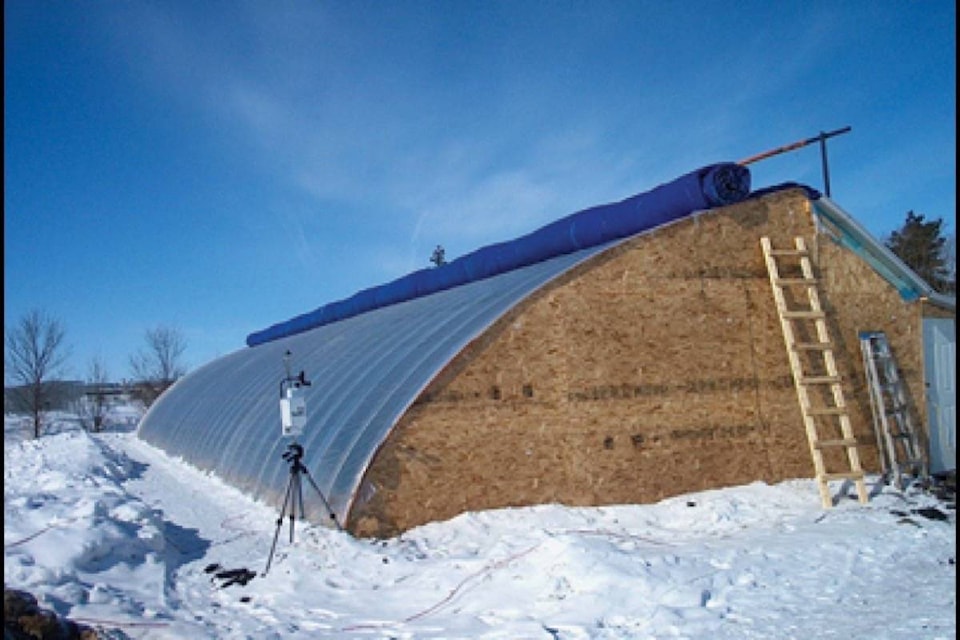By Mary Lowther
When I first saw the innovative Chinese greenhouses on the internet I didn’t know I’d have the opportunity to see one this summer.
These amazing, unheated greenhouses work so well that they supply the bulk of vegetables consumed in northeast China. Professor Zhang of Biosystems Engineering at the University of Manitoba, offered to show me a life-sized experimental greenhouse upon which he is still conducting research using alternative energy sources (e.g., biomass and solar) for supplemental heating and LED lighting, on campus. A few days ago I took him up on his offer when we were in Winnipeg and learned that he freely gives of his time to teach others how to make one themselves.
Professor Zhang has supervised many projects, “But”, he says, “Of all the projects I have worked on, this greenhouse is the one most people ask about.” I’m not surprised. He brought these innovative, low tech and low cost plans from China and has overseen the creation and testing of several of the greenhouses. For example, his studies have shown that when the outside temperature reaches a low of -16 C, the greenhouse remains at 9 C, while a conventional greenhouse falls to -11 C. This is 20 degrees warmer and makes a tremendous difference in plant survival, especially considering that this greenhouse is unheated.
The secret to its success lies in combining passive solar energy storage with affordable, locally sourced materials in much of its construction.
When sunlight penetrates the clear plastic cover facing the south, it warms up the interior back wall on the south side.
This wall absorbs and retains heat during daytime and radiates it into the greenhouse at night.
Insulation in this wall and in the east and west walls and a blanket that rolls over (or under) the clear plastic south cover also help to retain heat.
The greenhouse design allows for many adaptations: the north wall can be made of a frame filled with sand, gravel, rammed earth, straw bales or it can abut a building. Some greenhouses in China are dug down three or four feet deep and this soil gets piled up behind the north wall, creating a berm that insulates as well as provides access to the roof. A reflecting, narrow half-ceiling adjoins the upright north wall at an angle facing inward, augmenting winter sunlight coming through the plastic.
The heat-radiating capacity of the opaque northern wall outperforms the clear one on conventional greenhouses.
But how well do they perform under real life conditions in Manitoba? I visited farmer Rene Regnier who had two of these greenhouses built 10 years ago and figured I’d find out from the horse’s mouth. He took me inside one of them, showed me the nine-foot high tomato plants groaning with ripe fruit, walked with me under canopies of cucumbers hanging from wires strung across the inside of the greenhouse, smiled and said, “I love them.”
Please contact mary_lowther@yahoo.ca with questions and suggestions since I need all the help I can get.
